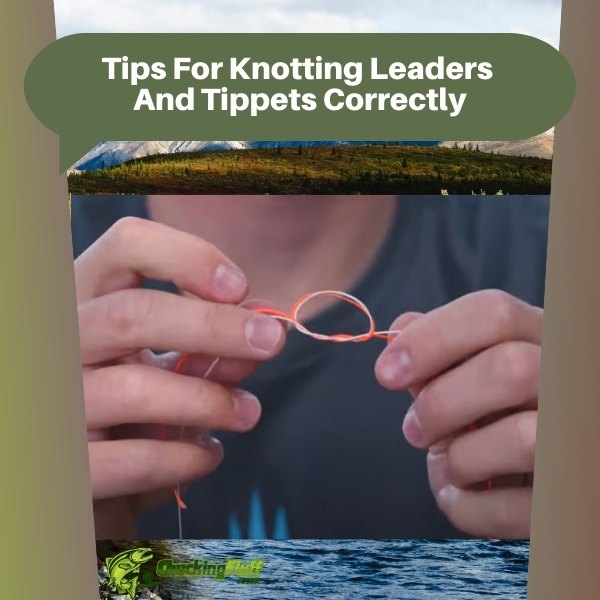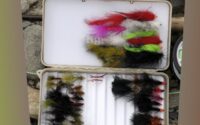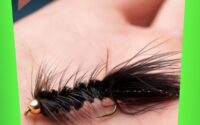| Disclosure: Just to be open and honest the buttons and links you click on in the website will in most cases take you to another website where you can purchase the products I am reviewing. As an Amazon Associate I earn from qualifying purchases. |
Tips For Knotting Leaders And Tippets Correctly

I’m going to kick things off with a clear picture of what leaders and tippets are, especially for those of you who might be newer to the world of fly fishing. Think of the leader as the clear chief that connects your fly line to the tippet, which in turn meets your fly. It’s all about subtlety and precision, ensuring those cunning fish don’t get wise to your line.
You’re going to find out why mastering the art of the knot isn’t just about keeping your fly attached—it’s the cornerstone of a rewarding fishing trip. A well-tied knot seamlessly transfers energy from the fly rod to the fly, making your cast smooth and your lure placement accurate.
This section will also introduce you to a roster of common knots such as the Surgeon’s Knot, the Blood Knot, and the Perfection Loop. Recognizing the right knot for the right situation is just as essential as knowing how to tie it neatly and securely.
Quick Post Navigation
Preparation: Laying the Groundwork for Perfect Knots
You’re going to find out about the importance of preparation in the world of fly fishing. Preparation isn’t just about having the right gear; it’s also about ensuring your materials and hands are in the best possible condition for tying knots.
Choose something that resonates with you when it comes to selecting the right material for your leader and tippet. Materials range from monofilament to fluorocarbon, and each has its pros and cons depending on water conditions and target species.
In my opinion, it’s important to have the right tools handy. These can range from simple nippers for cutting lines to specialized knot tying tools that can especially help out beginners or those with less dexterity.
Don’t worry too much about getting special equipment immediately. Instead, focus on keeping your hands clean and dry to prevent slipping, and ensure your line is free from oils and dirt for the strongest hold.
Trimming and conditioning your lines before knotting can be crucial. Always check for frayed ends or nicks in the line, as these weaknesses can cause your knot to fail, potentially losing you that trophy fish.
Let’s keep these preparatory steps in mind as we move on to the next section, where I’ll walk you through a step-by-step guide to tying some of the most reliable knots in fly fishing.
Step-by-Step Guide to Common Knots for Leaders and Tippets
Let’s jump right in with the Surgeon’s Knot, a go-to for connecting your tippet to the leader. Here’s why I like it: simplicity and strength. You’re going to find out just how to execute this knot with precision, and I’ll even include a pro tip to avoid common pitfalls.
Next up is the Blood Knot. It’s ideal when you need to attach two sections of the leader that are of similar size. In my experience, this knot’s effectiveness lies in its compact size and smooth profile, which helps in reducing snags.
You’ll also want to get the hang of the Perfection Loop. This knot allows you to create a loop at the end of the leader or tippet that is strong and stable. It’s a game-changer for quick and easy loop-to-loop connections.
Practice makes perfect, and this isn’t just about knowing how to make knots; it’s also about avoiding mistakes that can lead to weak connections or breakage. I’ll walk you through common hurdles and how to smoothly sail over them.
So, you’ve mastered the basics, what’s next? It’s taking care of your lines to ensure they last a long time. That’s going to include regular maintenance and knowing when to retire a weathered section. This is where we step into some advanced techniques and the importance of looking after your gear for the long haul.
Advanced Techniques and Maintenance
Now, after you’ve mastered the basics, you’re going to find out about some advanced knotting skills that can really elevate your angling game. Advanced knots, like the Albright Knot, might intimidate at first, but with a little practice, they become second nature.
I’m going to walk you through the ‘why’ of opting for these more complex knots. For instance, the Albright Knot is excellent for connecting lines of different materials or diameters. It’s strong, reliable, and worth the effort to learn.
Speaking of effort, consistency in your knot tying is only going to develop with regular practice. I can’t stress enough the importance of taking the time to tie and untie knots. This drills in the muscle memory, making you faster and more efficient on the water.
Maintenance is key as well. Check your leaders and tippets regularly for nicks or abrasion. Replacing them before they fail is a lot better than losing that trophy catch due to a weakened line.
For those wanting to dive even deeper, I’d suggest tapping into books, videos, and local fishing clubs for further learning. They offer a world of information and are a fantastic way to connect with experienced anglers who can really help you fine-tune your skills.
Remember, your first attempt doesn’t need to be your last. Being prepared to adjust and refine your technique is crucial. So, go on, get those knots down pat, and maybe next time, you’ll be the one sharing some clever tips by the water’s edge.
FAQ’s
What is the difference between a leader and a tippet in fly fishing?
The leader connects the fly line to the tippet, which then attaches to the fly. The leader ensures smooth energy transfer for better casting, while the tippet provides the subtlety needed to avoid alerting fish to your line.
Why is knot tying important in fly fishing?
Knot tying is crucial for a successful fishing trip. A well-tied knot ensures efficient energy transfer from the rod to the fly, improving casting accuracy and lure placement.
What are some common knots used for leaders and tippets?
Common knots include the Surgeon’s Knot (for connecting the leader to the tippet), the Blood Knot (for joining sections of similar diameter), and the Perfection Loop (for creating strong, stable loops for easy connections).
How should I prepare my hands and materials for knot tying?
Keep your hands clean and dry to prevent slippage, ensure your lines are free of dirt and oils for better knot strength, and check your lines for any frays or nicks before tying.
How can I maintain my leaders and tippets for long-term use?
Regularly inspect your lines for wear and tear, replace them if needed, and practice tying and untying knots to develop muscle memory for faster, more reliable performance on the water.


